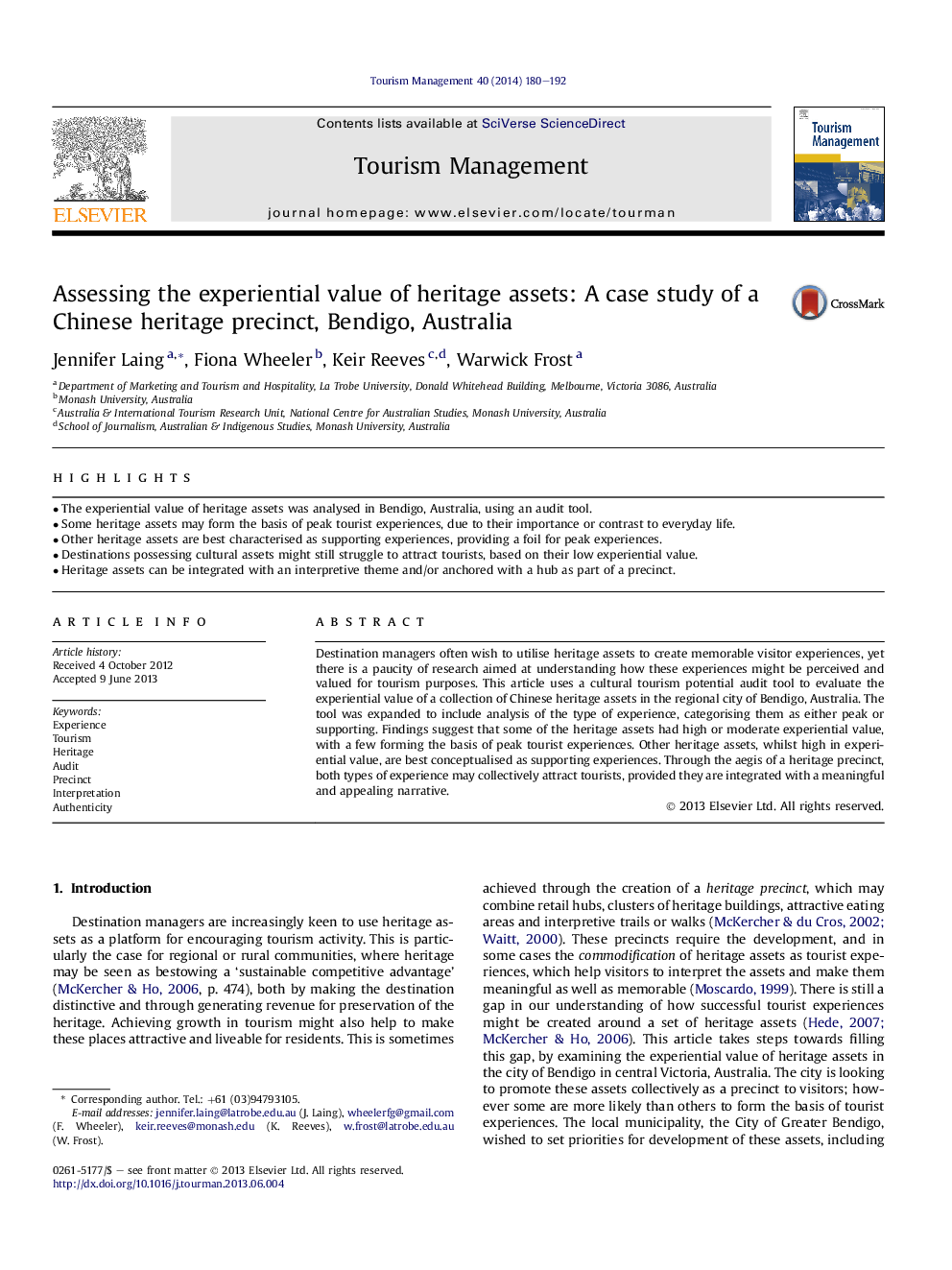| Article ID | Journal | Published Year | Pages | File Type |
|---|---|---|---|---|
| 7422311 | Tourism Management | 2014 | 13 Pages |
Abstract
Destination managers often wish to utilise heritage assets to create memorable visitor experiences, yet there is a paucity of research aimed at understanding how these experiences might be perceived and valued for tourism purposes. This article uses a cultural tourism potential audit tool to evaluate the experiential value of a collection of Chinese heritage assets in the regional city of Bendigo, Australia. The tool was expanded to include analysis of the type of experience, categorising them as either peak or supporting. Findings suggest that some of the heritage assets had high or moderate experiential value, with a few forming the basis of peak tourist experiences. Other heritage assets, whilst high in experiential value, are best conceptualised as supporting experiences. Through the aegis of a heritage precinct, both types of experience may collectively attract tourists, provided they are integrated with a meaningful and appealing narrative.
Related Topics
Social Sciences and Humanities
Business, Management and Accounting
Strategy and Management
Authors
Jennifer Laing, Fiona Wheeler, Keir Reeves, Warwick Frost,
